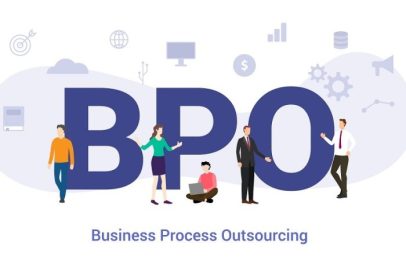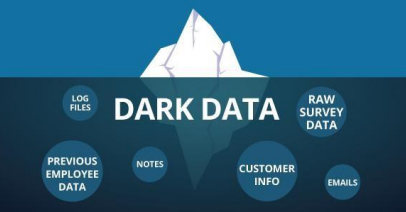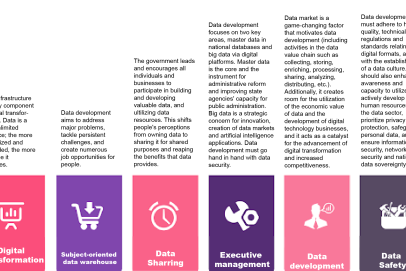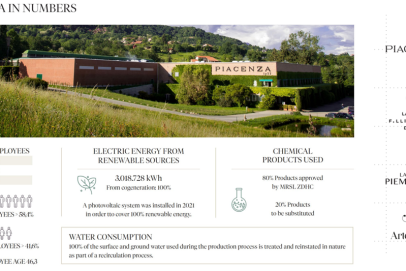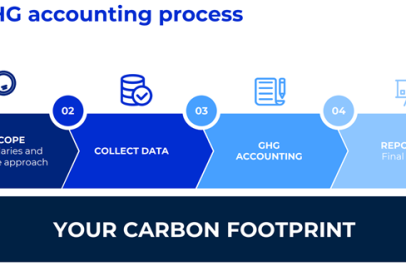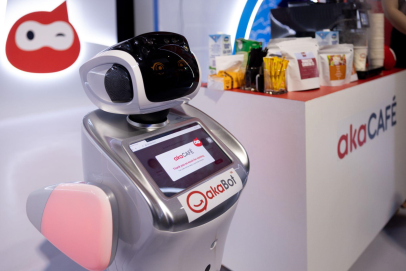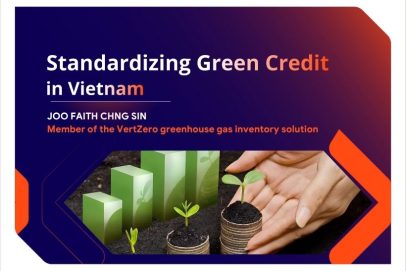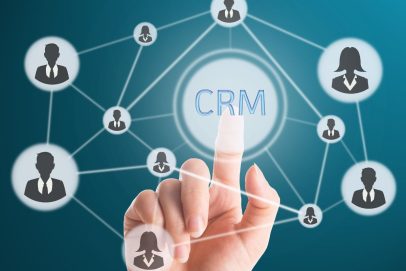Carbon accounting Software and ESG Software: What’s the Difference in the Sustainability Journey?
As transparency and sustainability reporting requirements become increasingly mandatory – especially with the introduction of stringent regulations such as CSRD (Europe) or SEC Climate Disclosure (US) – businesses not only face increasing pressure from investors and customers, but are also forced to digitize their ESG governance systems. Against this backdrop, the market has witnessed the rapid development of many technology solutions, from carbon accounting software to comprehensive ESG management platforms.
However, many organizations still confuse carbon accounting software, which specializes in measuring and reporting greenhouse gas (GHG) emissions, with ESG management software, a holistic solution to manage indicators related to Environmental, Social and Governance. Although they share the same goal of improving transparency and promoting sustainable development, these two types of tools have completely different scopes of functions, users, and implementation goals.
In this article, we will analyze the core differences between carbon accounting software and ESG management software, thereby helping businesses choose the solution that best suits their operational needs, compliance goals, and long-term development strategy.
1. Importance of Greenhouse Gas Inventory and ESG Management Software
In the context of the increasing requirements for transparency and compliance with sustainability standards, specialized software plays a key role in supporting businesses to effectively manage data related to environmental, social and governance (ESG).
According to the ESG in the Age of AI report published by KPMG in 2024, ESG data has now become huge and complex, with more than 1,000 distinct indicators that businesses need to process to meet comprehensive reporting requirements. In particular, under the impact of the European Sustainability Reporting Standards (ESRS), businesses in the European Union must publish more than 100 information criteria and nearly 700 key performance indicators (KPIs) related to ESG. This massive volume of data poses a major challenge in terms of ability to collect, standardize, and analyze, requiring smart technology solutions, automation integration, and in-depth analytics.
In this context, artificial intelligence (AI) is increasingly widely applied as a strategic tool to help businesses optimize the ESG data management process, ensuring accuracy, timeliness and compliance with international standards such as ESRS, CSRD or ISSB.
A recent study by Yuping Xiao and Li Xiao (2025), published in Scientific Reports titled The Impact of Artificial Intelligence-driven ESG Performance on Sustainable Development of Central State-owned Enterprises Listed Companies, affirmed the active role of AI in improving ESG performance and promoting sustainable development in Chinese state-owned enterprises. Based on quantitative analysis using OLS regression model and SEM structure model, the study shows that the level of AI application is strongly correlated with ESG performance (β = 0.237, p < 0.01), and ESG performance plays an intermediate role in the relationship between AI and sustainable development (indirect effect 0.102, p < 0.01). AI not only helps businesses collect and process ESG data in real-time, but also improves environmental monitoring, strengthens social responsibility, and improves governance efficiency, with a more pronounced impact on social and governance pillars than the environment.
Most of today’s carbon accounting and ESG management software integrate AI to automate the process of collecting, calculating and matching emission factors, improving efficiency and accuracy. Platforms such as Persefoni, Plan A or VertZéro are emerging as comprehensive solutions, not only helping businesses meet information disclosure requirements according to GRI, SASB, TCFD standards, but also supporting the development of Net Zero strategies and strengthening long-term ESG risk management.
2. Concept of Carbon Accounting Software and ESG Management Software
While both play an important role in sustainability management, Carbon Accounting Software and ESG Management Software serve different specific goals.
Carbon Accounting Software is a specialized software designed to measure, calculate and report greenhouse gas (GHG) emissions according to Scope 1, 2 and 3 according to international standards such as GHG Protocol or ISO 14064. This tool helps businesses accurately identify emissions sources throughout the entire value chain – from internal operations to indirect activities such as supply chain, logistics, and product consumption.
Meanwhile, ESG Management Software is a holistic management platform, allowing businesses to track, evaluate, and report on all indicators related to the three main pillars of sustainable development: Environment (E), Society (S), and Governance (G). This software not only includes emissions data, but also integrates elements such as resource utilization, human resource diversity, occupational safety, legal compliance, risk management, and many other aspects to meet the requirements of standard frameworks such as CSRD, GRI, SASB, TCFD or SDGs.
The relationship between the two types of software
Although there is a different range of functions, carbon accounting software is an integral part of the ESG management ecosystem. Greenhouse gas (GHG) emission data – measured and standardized through carbon accounting tools, often serves as a core indicator in the “Environmental” pillar of ESG. In other words, ESG management software often integrates or links with carbon accounting software to ensure completeness, accuracy, and transparency in ESG reporting.
The link between greenhouse gas inventory and ESG
Therefore, for businesses that are in the process of digital transformation in sustainable governance, understanding this connection helps them build a reasonable implementation roadmap: starting from greenhouse gas inventory to overall management of ESG indicators, in order to meet the increasing requirements from the market and regulators.
3. Similarities and differences between KNK inventory software and ESG management software
a. Similarities
Both types of software, although different in scope of functions, aim to promote transparency in sustainability reporting and support businesses to reduce emissions. Through the systematic collection, processing and presentation of data, these tools help businesses not only understand their environmental, social and governance performance, but also proactively develop improvement strategies to meet expectations from investors. partners and management agencies.
In addition, both carbon accounting software and ESG management software are developed to comply with important international standards such as the GHG Protocol (for greenhouse gas inventory), CSRD and GRI (for overall ESG reporting). Both integrate standardized, verifiable audit trail reporting – ensuring that data is clearly tracked, traceable and verifiable during external audits or audits. This not only helps businesses manage risk but also enhances their credibility and credibility in the international market.
b. Differences
Although there are some similarities such as supporting ESG transparency and complying with international standards, these two types of software are markedly different in terms of scope of functions, users, complexity, and implementation goals. Understanding these differences helps businesses identify the right type of tools for their specific stage of development and sustainability strategy. Here is a detailed comparison table:
| Criteria | Carbon Accounting Software | ESG Management Software |
| Scope | Focus on measuring and reporting greenhouse gas emissions (CO₂, CH₄, N₂O…) | Comprehensive coverage of three ESG pillars: Environment (E), Social (S) and Governance (G) |
| Application | Serving goals such as: Net Zero planning, building a carbon footprint, complying with the GHG Protocol | Develop an overall sustainability strategy, evaluate ESG ratings, support CSRD/GRI reporting |
| Who should use it | Environment Department, Technical Operation | ESG Department, Board of Directors, Investors, Communication/Marketing Department |
| Data complexity | Mono-dimensional data, mainly emission parameters, physical measurements | Multi-dimensional data, including quantitative and qualitative data from complex social, administrative, and operational fields |
| Integration | Often integrated into ESG software or standalone operations for emissions inventory | Data from carbon accounting software can be integrated to create complete and standardized ESG reports |
4. Which option is right for your business?
a. When to choose Carbon Accounting Software?
Carbon Accounting Software is the right choice when businesses have specialized needs for measuring and reporting greenhouse gas emissions according to international regulations and standards. Concrete:
- Businesses need to comply with mandatory requirements for reporting greenhouse gas emissions such as according to the GHG Protocol, SEC Climate Disclosure (USA), or national environmental regulations.
- Businesses in the global supply chain, especially with the European market, are affected by the CBAM (Carbon Border Adjustment Mechanism) or CSRD (Corporate Sustainability Reporting Directive).
- Businesses are building a Net Zero roadmap or committing to the SBTi (Science-Based Targets) initiative – which requires the ability to quantify emissions in detail and monitor the progress of emission reductions transparently.
In these cases, choosing the right carbon accounting software will play an important role in helping businesses collect, process and report emissions data accurately and transparently, while supporting decision-making and ensuring compliance during the green transition. Currently, there are many prominent software platforms on the market, trusted by global businesses as well as in Vietnam.
Persefoni is one of the leading greenhouse gas inventory software platforms, featuring the ability to automate the entire process of collecting and standardizing emission data according to the GHG Protocol and SEC Climate Disclosure standards. Persefoni also integrates emission trend analysis tools and simulates the Net Zero roadmap, especially suitable for multinational corporations and listed enterprises that need transparent financial emissions reporting.
Persefoni Software
Plan A provides a greenhouse gas inventory and management solution that focuses on the Scope 3 supply chain – the largest but most complex sector of a business’s total emissions. This software not only supports CSRD and CBAM compliance, but also integrates the Net Zero Planning dashboard, helping businesses simulate and track emission reduction roadmaps in real time.
Watershed is the platform of choice for many technology and financial businesses in the US thanks to its ability to process big greenhouse gases data, especially in value chain emission management. Watershed supports reporting according to international standards such as the SBTi and GRI, and provides a “what-if” analysis tool so that businesses can assess the impact of strategic decisions on emissions.
Microsoft Cloud for Sustainability is a powerful solution for businesses that already use the Microsoft ecosystem. This software allows connecting and collecting data from multiple sources (ERP, CRM, IoT sensors), automatically generates GHG reports, and supports compliance with TCFD, SEC, and CSRD standards. In particular, this platform integrates AI to detect anomalies in emission data, helping to improve the accuracy and transparency of reporting.
VertZéro, developed by FPT IS, is a greenhouse gas inventory software specifically designed for Vietnamese businesses. VertZéro supports automatic pairing of operational data with international and domestic emission factors, allowing businesses to easily comply with GHG Protocol, CSRD, and meet reporting requirements in global supply chains. With its high customizability, VertZéro is suitable for both large and medium-sized enterprises looking for a digital transformation solution in greenhouse gas emission management.
VertZéro carbon accounting software
b. When to choose ESG Management Software?
ESG Management Software is suitable for businesses that need to comprehensively manage Environmental-Social-Governance (E-S-G) factors, especially in the context of complying with international regulations and promoting sustainable reputation in the market. Concrete:
- Businesses need to prepare ESG reports according to global standards such as GRI, SASB, TCFD or ISSB, in order to meet the requirements of transparent and systematic disclosure of sustainable information.
- Enterprises that are listed or plan to raise capital from ESG investment funds, which require a transparent management system and complete data on factors E, S, and G.
- Businesses aim to manage risks and seize ESG opportunities in the medium and long term, thereby building a sustainable development strategy that integrates ESG into operations, governance and corporate culture.
With the ability to integrate multiple data sources, evaluate ESG performance, and support strategic decision-making, ESG management software has become an indispensable tool in the sustainable transformation journey of businesses. In today’s market, there are many outstanding ESG Management Software platforms, meeting diverse needs from preparing compliance reports to building long-term sustainable development strategies.
SpheraCloud ESG is one of the most comprehensive platforms, supporting businesses to prepare ESG reports according to GRI, SASB, TCFD standards, and integrate environmental, social and governance data management in a single system. SpheraCloud allows businesses to track ESG performance in real-time and automate the process of collecting and aggregating data from different operational departments.
Workiva ESG Solution is highly appreciated for its ability to connect and synchronize ESG data with financial statements, supporting listed businesses to meet the requirements of the SEC, CSRD and ISSB on sustainable disclosure. Workiva also provides a powerful linked reporting platform, which makes it easy to standardize ESG reports, while enhancing transparency and reliability for investors.
In addition to comprehensive ESG platforms, VertZéro, a greenhouse gas inventory software developed by FPT IS, is also showing strong strides in supporting businesses to make a sustainable transition. Although it started as a software specializing in greenhouse gas inventory, VertZéro is constantly developing and expanding features to accompany businesses in their ESG journey. The software integrates the “one-click report” feature, allowing businesses to create emission reports that meet GRI standards with just one simple operation. This is an effort to help businesses not only comply with greenhouse gas inventory requirements, but also get closer to the goal of comprehensive sustainable development. well meet the expectations of investors, partners and stakeholders on ESG transparency and effectiveness.
5. Choosing the right technology solution: A stepping stone to sustainable development
In the context of increasingly stringent requirements for transparency and compliance with sustainable development standards, choosing the right technology tools not only helps businesses optimize their operational processes but also improves their competitiveness in the international market. Carbon accounting software and ESG management software, while both support sustainable governance, serve specific goals: Carbon accounting focuses on measuring and managing greenhouse gas emissions, while ESG management provides a holistic view of overall environmental performance. society and corporate governance.
Understanding this difference will help organizations choose the solution that best fits their operational needs, compliance requirements, and long-term growth strategy.
On that journey, FPT is proud to introduce the VertZéro solution – a comprehensive technology platform, designed to accompany and support businesses from the first steps of the emission inventory process to building an ESG management system that meets international standards such as GRI. SASB, CSRD or ISSB. VertZéro not only provides detailed Scope 1, 2, 3 greenhouse gas (GHG) emission measurement and reporting tools, but also supports flexible customization according to the specific needs of each business:
- Customize emission factors in accordance with industries, types of production, geographical areas and supply chain characteristics, ensuring accuracy, transparency and close to reality.
- Flexible ESG report design in a variety of formats, meeting information disclosure requirements from investors, regulators, and strategic partners.
- Easily connect and integrate with existing management systems such as ERP, IoT, or internal data platforms, automating the entire process of collecting and processing ESG data.
- Supporting businesses to build a Net Zero roadmap and ESG risk management, from determining emission baselines to measuring mitigation progress and forecasting transformation scenarios.
VertZéro is committed to always being ready to accompany businesses, from strategic planning, technology implementation to operational support and updating the latest requirements for global sustainability standards. With a team of experienced technology and ESG experts from FPT, we not only provide solutions but also provide comprehensive support, helping businesses turn compliance challenges into sustainable growth opportunities.
To learn more and experience solutions from VertZéro, please visit: https://vertzero.eco/.
References
- KPMG (2024) ESG in the Age of AI. KPMG International.
- Xiao, Y. and Xiao, L. (2025) ‘The impact of artificial intelligence‑driven ESG performance on sustainable development of central state‑owned enterprises listed companies’, Scientific Reports, 15, p. 8548.
- Persefoni AI Inc. (n.d.) Climate Management & Carbon Accounting Platform. Available at: https://www.persefoni.com
- Watershed (n.d.) The enterprise sustainability platform. Available at: https://watershed.com/fr
- Plan A (n.d.) Carbon Accounting and ESG Management Platform. Available at: https://plana.earth
- Microsoft (n.d.) Microsoft Cloud for Sustainability. Available at: https://www.microsoft.com/en-us/sustainability/cloud
- Sphera (n.d.) SpheraCloud ESG Platform. Available at: https://sphera.com/spheracloud-platform/spheracloud-esg/
- Workiva (n.d.) Workiva ESG Reporting Solution. Available at: https://www.workiva.com/solutions/esg-reporting
| Exclusive article by FPT expert
Mr Tuan Pham – Product Owner of VertZero, MBA in Climate Change. Specializing in GHG Inventory, LCA, and EU Taxonomy. In charged of VertZéro product development. |





